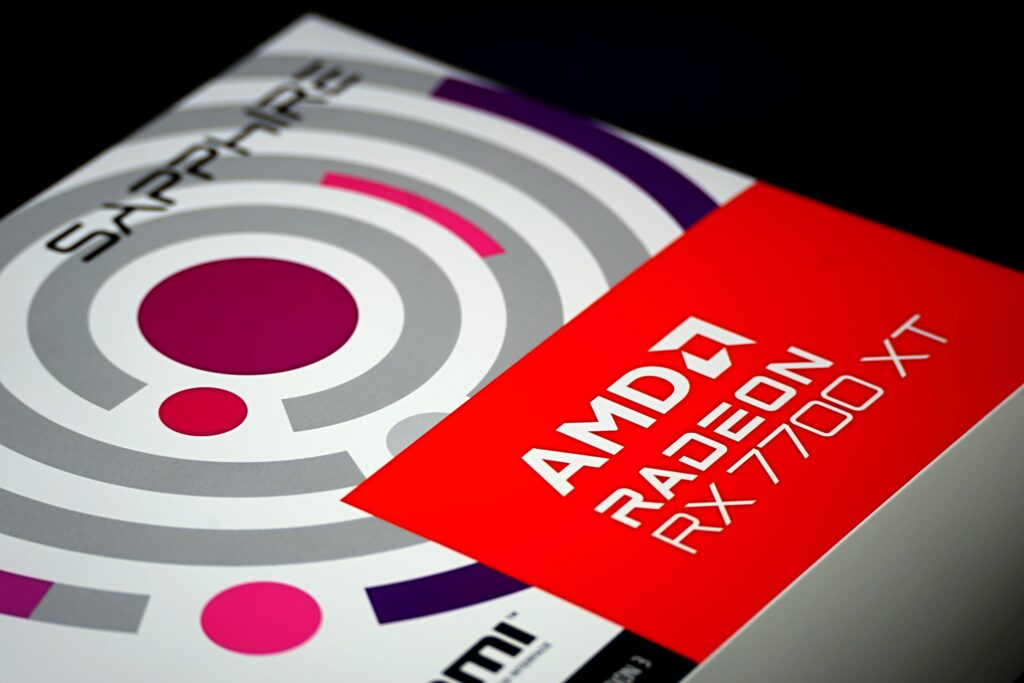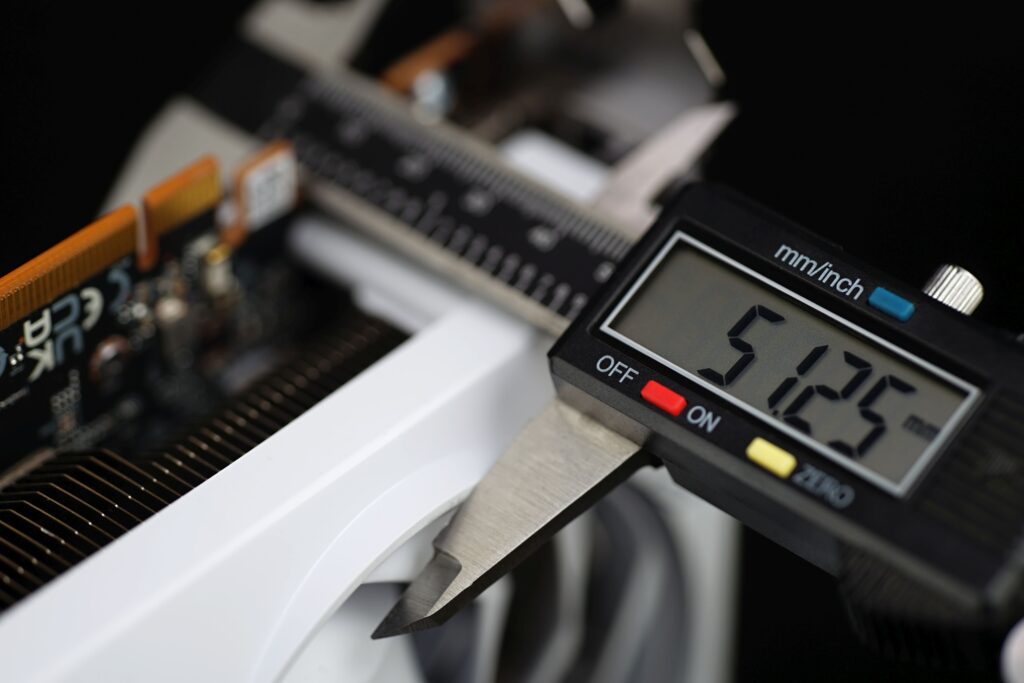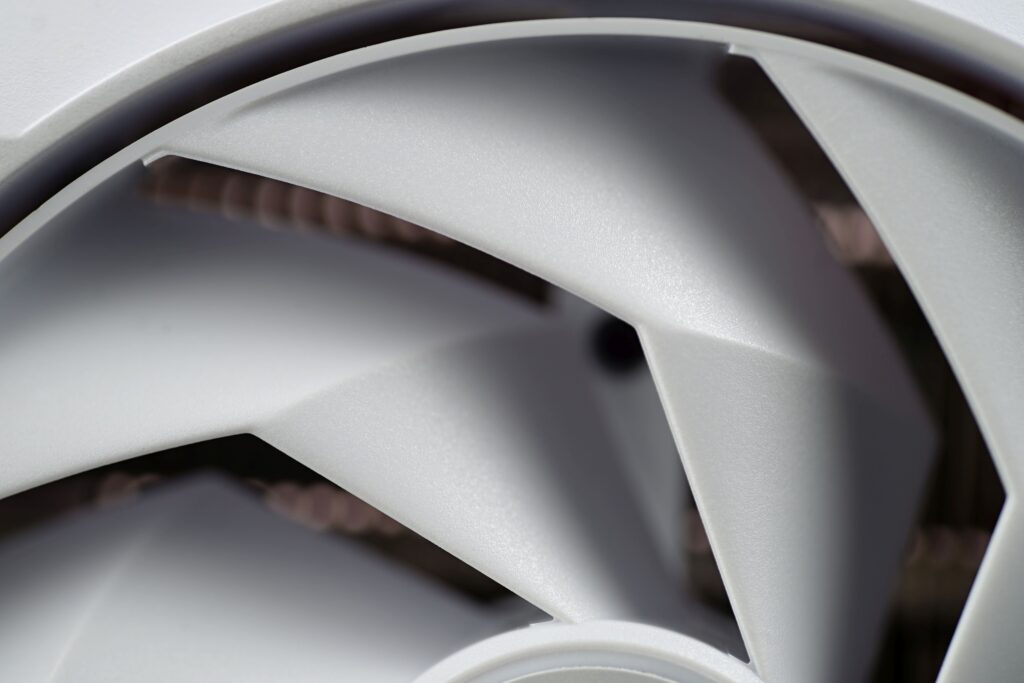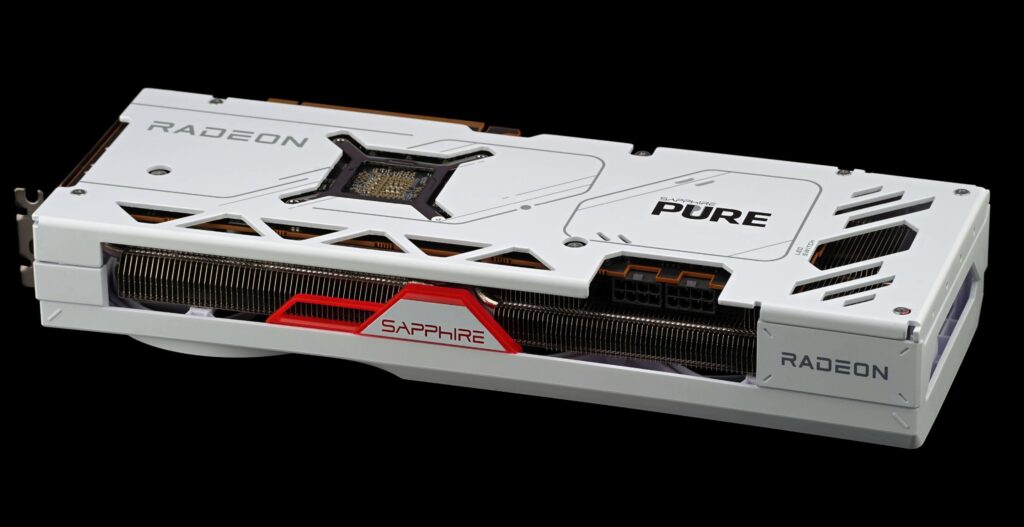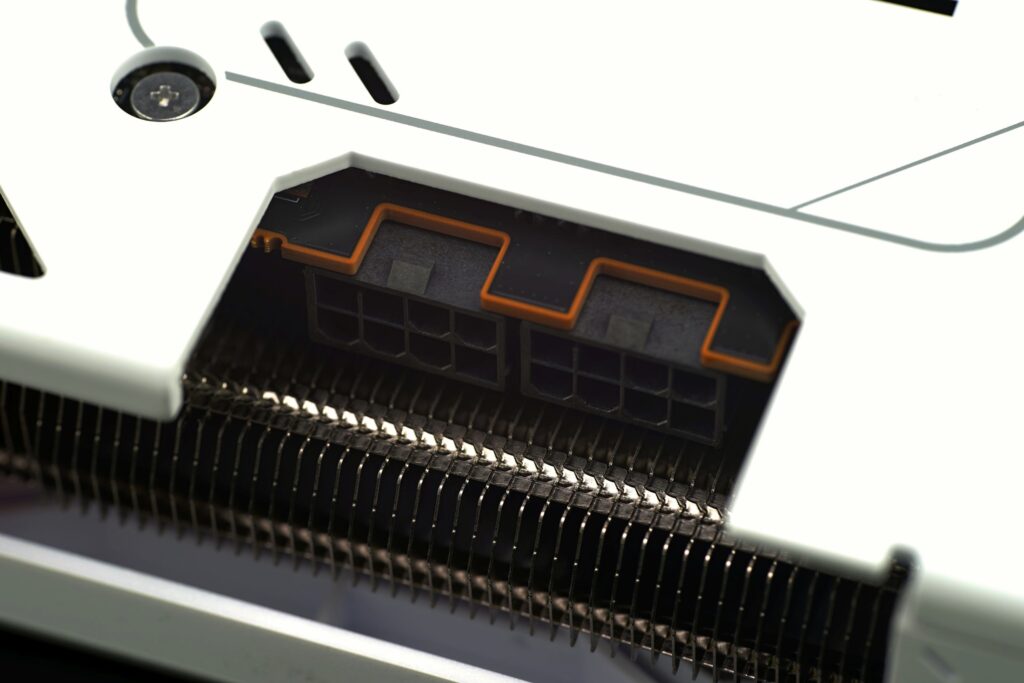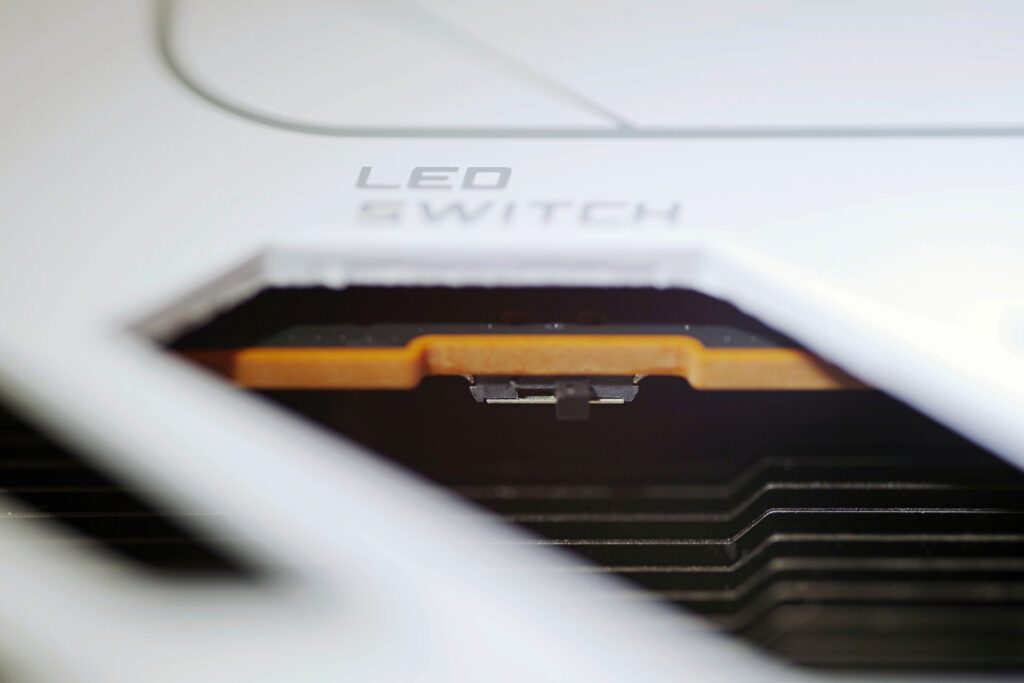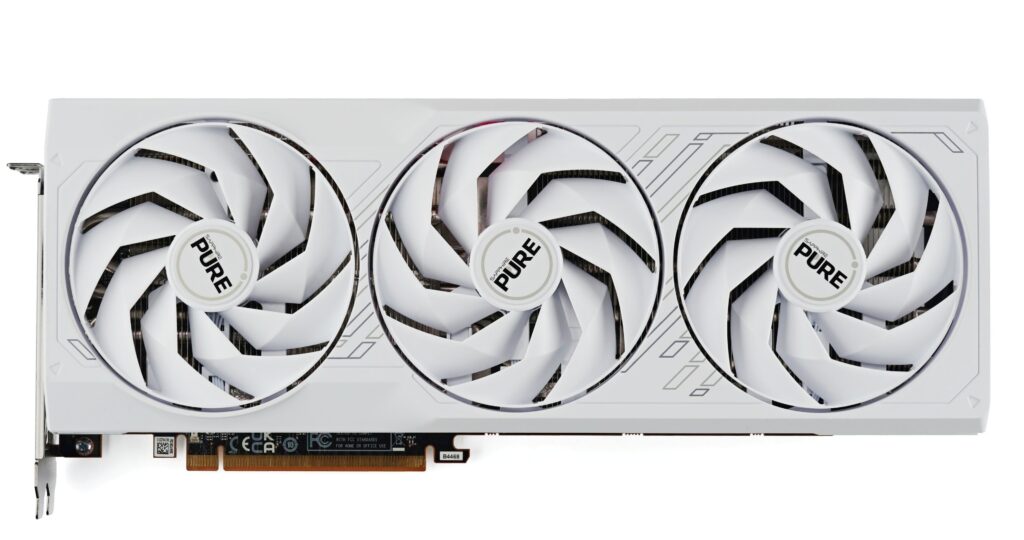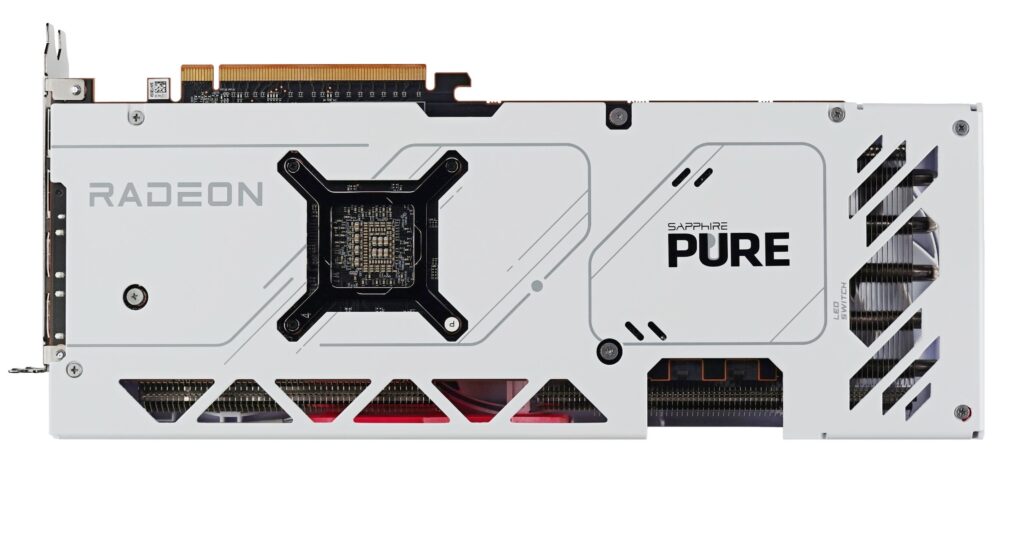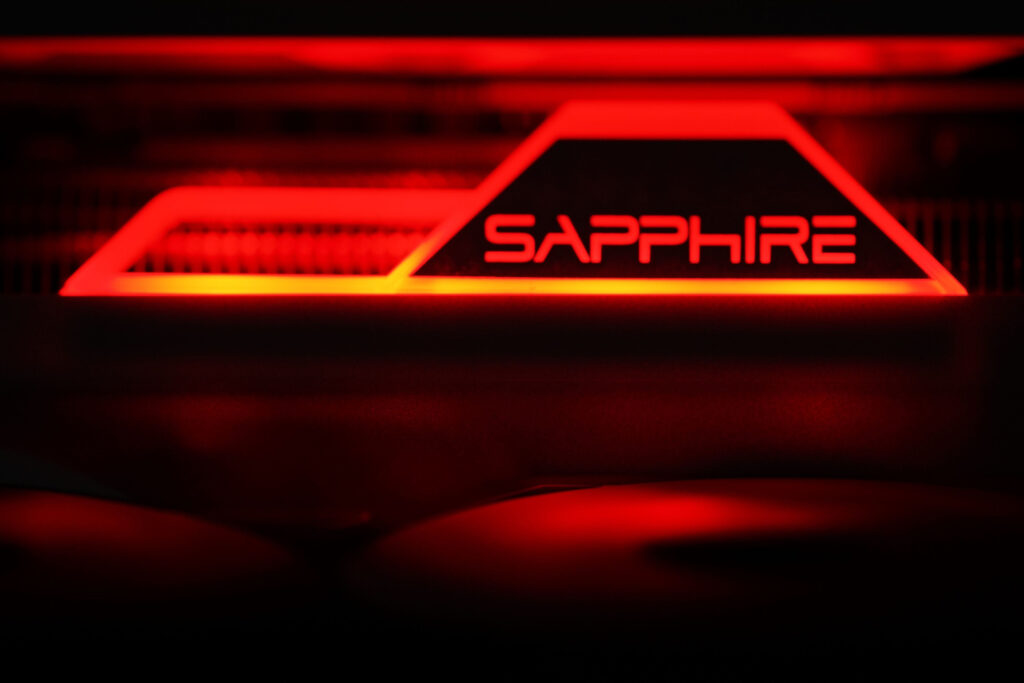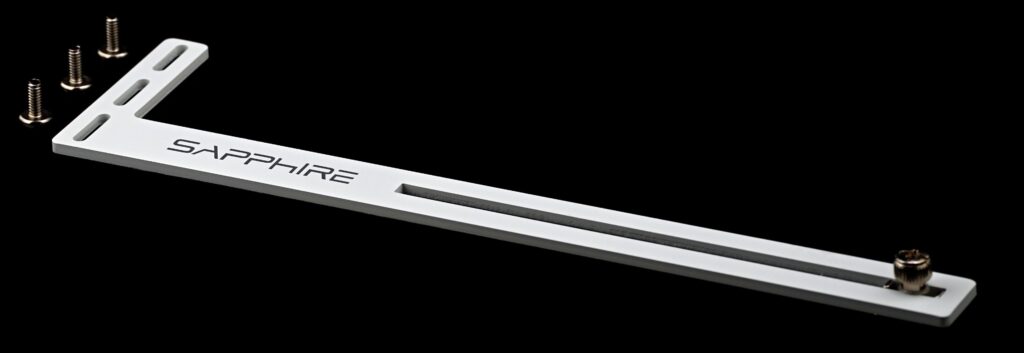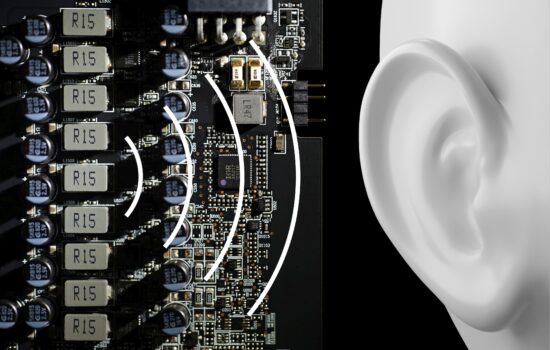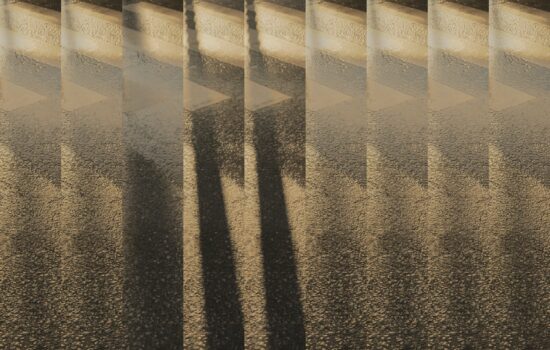Sapphire RX 7700 XT Pure in detail
The cheaper of the pair of Radeons with the Navi 32 GPU is priced closest to the GeForce RTX 4060 Ti. Although the RX 7700XT is a bit pricier, it often has a significant performance edge, even attacking the RTX 4070. In this comparison, the RX 7700 XT with ray-tracing is already noticeably behind, and its efficiency is a notch weaker, but the price-performance ratio is often still better. And this is also true for the Sapphire Pure version in white.
Like the RTX 4070, the RX 7700 XT has 12GB of memory, which is also connected to a 192-bit bus. The difference is that the RX 7700 XTs use “only” GDDRR6 memory, while the RTX 4070’s GDDR6X is faster, so the Radeons’ bandwidth is a bit lower. However, the RX 7700 XT is a significantly cheaper alternative that, when made with a comparable cooler, costs at least a hundred euros less (than the RTX 4070). It is thus more of a direct competition to the slightly cheaper RTX 4060 Ti. Although the RX 7700 XT sits rather somewhere in the middle between the aforementioned GeForce graphics cards. It all depends on what is taken into account in the evaluation. Traditionally, we’ll go over all aspects in the tests and conclude with a comprehensive evaluation. But for now, let’s pause for a moment at the details of the tested RX 7700 XT model in the Sapphire Pure version.
Detaily Sapphire RX 7700 XT Pure
The Pure model line is new from Sapphire and it categorically places it between Pulse and Nitro. This is reflected in the design mix of elements from both lines, with one unique feature being the white finish. For the latter too, the RX 7700 XT may appeal specifically to users whose vision is in a more brightly coloured build or with contrasting components.
The feature from the Nitro series is the use of three fans and thus a large cooler overall. However, it is a bit smaller, or a centimeter shorter, which naturally results in weaker cooling performance per unit of noise. In height, the RX 7700 XT Pure is 51.3mm and Sapphire is talking about a 2.5-slot card. On motherboards, however, it will safely make installing an expansion card in the third slot impossible.
Compatibility with cases is about average. However, beware in smaller ones, especially when combined with the installation of a liquid cooler with a radiator behind the front panel. At 320mm, it’s not the longest card, but it definitely ranks among the longer ones.
In width, the RX 7700 XT Pure is 128.6mm, with which it outgrows the PCIe slot latch by 23mm. In specific cases (for cases with a longitudinally divided interior into two chambers), there could eventually be a collision (with the side panel) in this axis as well.
The larger width allows the use of larger fans, which in this case have a diameter of 95 mm. Judging by the basic characteristics of the rotor, it’s obvious that Sapphire has really tried to achieve the highest possible efficiency. With regard to even load (i.e. also towards the hub), the blades bend in the middle. This also increases their strength, which is finally supported by a hoop to stiffen the blade tips. This is mainly to eliminate vibration and avoid high tonal peaks. But also for suppressing secondary noise that could arise, for example, from vibration transmission to the heatsink.
For maintenance purposes, the fans can be separated from the frame into which they are screwed, but complete replacement is more difficult than in the Nitro range. This is because the connector is not in the frame (as with the Nitro) and the connection is by cable, following the pattern of the Pulse cards.
The backplate is metal, but without thermally conductive contact with the PCB, so it mainly has a protective and reinforcing function.
At the end, where the cooler extends beyond the PCB, there are cooling cutouts in the backplate to more efficiently dissipate heated air.
The RX 7700 XT Pulse is externally powered by two 6+2-pins and the claimed TGP is 5W lower (240W) than the reference one (245W). This graphics card doesn’t have two BIOSes, there’s only one, and the switch at the back, on the shorter side of the PCB, is for LED activity. You can safely turn this off to change the default setting with active lighting.
The lighting colour is fixed. Red LEDs are used to light up the Sapphire logo from the side.
The accessories also include an aluminium support bracket. The weight of the RX 7700 XT Pure, which is around 1139 grams, is indeed handled by the current PCIe ×16 slots thanks to their reinforcement, but this bracket is also a solution to keep the graphics card level, which is a matter of appearance. The latter, however, is important for many users. Especially when you can see into most cases because of the side panel made of glass.
Note: The article continues in the following chapters
- Contents
- Sapphire RX 7700 XT Pure in detail
- Table of parameters
- Methodology: performance tests
- Methodology: how we measure power draw
- Methodology: noise and sound measurement
- Methodology: temperature tests
- Test setup
- 3DMark
- Age of Empires II: DE
- Assassin’s Creed: Valhalla
- Battlefield V
- Battlefield V with DXR
- Borderlands 3
- Control
- Control with DXR
- Counter-Strike: GO
- Cyberpunk 2077
- Cyberpunk 2077 with DXR
- DOOM Eternal
- F1 2020
- FIFA 21
- Forza Horizon 4
- Mafia: DE
- Metro Exodus
- Metro Exodus with DXR
- Microsoft Flight Simulator
- Red Dead Redemption 2 (Vulkan)
- Red Dead Redemption 2 (Dx12)
- Shadow of the Tomb Raider
- Shadow of the Tomb Raider with DXR
- Total War Saga: Troy
- Wasteland 3
- Overall gaming performance and performance per euro
- CompuBench (OpenCL)
- SPECviewperf 2020 and SPECworkstation 3
- FLOPS, IOPS and memory speed tests
- 3D rendering 1/2 (LuxMark and Blender@Cycles)
- 3D rendering 2/2 (Blender@Radeon ProRender and Eevee)
- Photo editing (Adobe Photoshop, Lightroom and Affinity Photo)
- Broadcasting (OBS and Xsplit)
- Password cracking
- GPU clock speed
- GPU and VRAM temperatures
- Net graphics card power draw and performance per watt
- Analysis of 12 V branch power supply (higher load)
- Analysis of 12 V branch power supply (lower load)
- Analysis of 3.3 V branch power supply
- Noise level
- Frequency response of sound
- Conclusion






